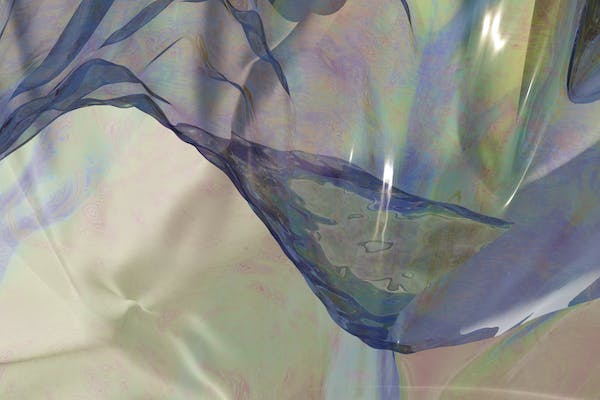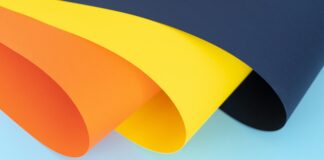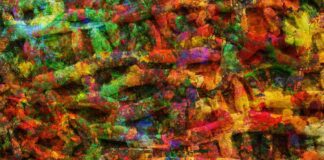Neumorphism, Neumorphism, Neumorphism—these syllables are reverberating across the design world, shaping a new visual language that has captured the attention of designers, developers, and enthusiasts alike. Neumorphism, with its distinctive blend of skeuomorphism and minimalism, has emerged as a design trend that seeks to strike a delicate balance between familiarity and innovation. As we delve into the realm of Neumorphism, we uncover a design philosophy that embraces depth, simplicity, and a touch of nostalgia.
Ten Key Aspects of Neumorphism:
1. Fusion of Skeuomorphism and Minimalism: Neumorphism seamlessly marries the principles of skeuomorphism and minimalism. It draws inspiration from the tactile and realistic qualities of skeuomorphism while embracing the clean and functional aesthetics of minimalism. This fusion creates a unique design style that is both visually engaging and intuitively functional.
2. Soft and Subtle Elevation: At the heart of Neumorphism lies its characteristic soft elevation effect. Elements appear to be slightly raised from the background, casting gentle shadows to simulate a three-dimensional appearance. This effect enhances the user interface’s tactile quality, inviting users to interact with the design in a more engaging manner.
3. Subdued Color Palette: Neumorphism often employs muted and subtle color palettes. These colors complement the soft shadows and elevated elements, contributing to the overall harmonious and calming visual experience. The subdued color choices enhance the design’s elegance and sophistication.
4. Focus on User Experience: Neumorphism places a strong emphasis on user experience. The design style’s tactile and realistic attributes make it inherently intuitive for users to understand interactive elements and their functions. This emphasis on user-centered design aligns well with the goal of creating seamless and enjoyable digital experiences.
5. Accessibility and Legibility: While Neumorphism brings a distinct visual appeal, it’s essential to maintain a balance between aesthetics and usability. Designers need to ensure that elements remain easily distinguishable and legible, especially for users with visual impairments. The interplay of light and shadow must not compromise the clarity of the interface.
6. Controversies and Debates: Neumorphism has sparked debates within the design community. Some argue that the subtle color variations and minimal contrast in Neumorphic designs can lead to accessibility issues. Designers need to be conscious of the potential challenges and strive to find solutions that cater to both aesthetics and usability.
7. Implementation in UI Elements: Neumorphism can be applied to various user interface (UI) elements, including buttons, cards, input fields, and more. Each element can feature a soft elevation effect, creating a cohesive and inviting interface that encourages user engagement. Neumorphic elements can be integrated into both mobile and web applications.
8. Evolution of Design Systems: Neumorphism challenges traditional design systems by introducing a new visual paradigm. As designers explore the possibilities of this style, they contribute to the evolution of design trends and methodologies. Neumorphism encourages creative experimentation and pushes the boundaries of what is considered visually appealing and functional.
9. Subtle Branding and Identity: Brands looking to adopt Neumorphism can leverage its aesthetic qualities to convey a sense of elegance and modernity. Neumorphic elements can be incorporated into branding materials, websites, and applications to create a consistent and memorable brand identity.
10.Future of Neumorphism: The future of Neumorphism is still unfolding. As designers continue to explore and refine this design style, we can expect to see further innovations and adaptations. The challenges related to accessibility and legibility will likely lead to refinements in how Neumorphism is implemented, ensuring that it remains a viable and inclusive design approach.
Neumorphism is more than just a visual trend—it’s a reflection of the ever-evolving design landscape. By blending elements of skeuomorphism and minimalism, Neumorphism offers a fresh perspective that resonates with users seeking a balance between familiarity and modernity. As designers embrace the nuances of this design philosophy and address its challenges, Neumorphism has the potential to shape the way we interact with digital interfaces, bringing a touch of tactile elegance to our digital experiences.
Navigating the Intersection of Design and User Experience
Neumorphism, Neumorphism, Neumorphism—these syllables are reverberating across the design world, shaping a new visual language that has captured the attention of designers, developers, and enthusiasts alike. Neumorphism, with its distinctive blend of skeuomorphism and minimalism, has emerged as a design trend that seeks to strike a delicate balance between familiarity and innovation. As we delve into the realm of Neumorphism, we uncover a design philosophy that embraces depth, simplicity, and a touch of nostalgia.
At the heart of Neumorphism lies its characteristic soft elevation effect. Elements appear to be slightly raised from the background, casting gentle shadows to simulate a three-dimensional appearance. This effect enhances the user interface’s tactile quality, inviting users to interact with the design in a more engaging manner. The fusion of skeuomorphism and minimalism in Neumorphism seamlessly marries the principles of both styles, creating a unique design approach that is visually engaging and intuitively functional.
Neumorphism often employs muted and subtle color palettes, complementing the soft shadows and elevated elements. These subdued colors contribute to the overall harmonious and calming visual experience that Neumorphism aims to create. This emphasis on softness and simplicity aligns well with the trend’s goal of fostering an interface that is inviting and pleasant to engage with.
The focus on user experience is a cornerstone of Neumorphism. By drawing inspiration from the real world and utilizing familiar tactile elements, Neumorphic designs inherently guide users through the interface. The soft and subtle elevation, combined with the gentle play of light and shadow, allows users to easily understand the interactive nature of elements, making navigation more intuitive.
However, Neumorphism is not without its controversies and debates. Some designers argue that the subtle color variations and minimal contrast in Neumorphic designs can lead to accessibility issues, particularly for users with visual impairments. While the style offers a visually appealing approach, designers must carefully balance aesthetics with usability to ensure that the design remains inclusive and functional for all users.
The implementation of Neumorphism in various UI elements, including buttons, cards, and input fields, allows designers to create a cohesive and engaging interface. The elevation effect can be applied to both mobile and web applications, enhancing the user experience across different platforms. As the trend evolves, designers are experimenting with innovative ways to integrate Neumorphic elements seamlessly into various design systems.
Neumorphism challenges traditional design systems by introducing a new visual paradigm. As designers explore the possibilities of this style, they contribute to the evolution of design trends and methodologies. Neumorphism encourages creative experimentation and pushes the boundaries of what is considered visually appealing and functional.
Brands looking to adopt Neumorphism can leverage its aesthetic qualities to convey a sense of elegance and modernity. Neumorphic elements can be incorporated into branding materials, websites, and applications to create a consistent and memorable brand identity. The subtle and sophisticated nature of Neumorphism can enhance a brand’s visual presence while maintaining a user-centric approach.
The future of Neumorphism is still unfolding. As designers continue to refine this design style, we can anticipate further innovations and adaptations. The challenges related to accessibility and legibility will likely lead to refinements in how Neumorphism is implemented, ensuring that it remains a viable and inclusive design approach.
Neumorphism is more than just a visual trend—it’s a reflection of the ever-evolving design landscape. By blending elements of skeuomorphism and minimalism, Neumorphism offers a fresh perspective that resonates with users seeking a balance between familiarity and modernity. As designers embrace the nuances of this design philosophy and address its challenges, Neumorphism has the potential to shape the way we interact with digital interfaces, bringing a touch of tactile elegance to our digital experiences.
The Evocative Allure of Neumorphism
In the ever-evolving world of design, Neumorphism stands as a captivating and evocative approach that has captivated designers and users alike. Rooted in the marriage of skeuomorphism and minimalism, Neumorphism presents a visual aesthetic that resonates with our innate desire for both familiarity and innovation. The distinctive soft elevation effect, inherent in Neumorphism, adds a tactile quality to digital interfaces, inviting users to engage and explore.
The fusion of tactile realism and clean minimalism in Neumorphism results in a design style that is both visually pleasing and functionally intuitive. Its subdued color palette complements the soft shadows and elevation, creating a harmonious visual experience that soothes and engages the senses. Through its focus on user experience, Neumorphism bridges the gap between the digital and physical worlds, making interactions with technology more natural.
Yet, Neumorphism doesn’t come without its challenges. Its subtle color variations can potentially pose accessibility concerns, prompting designers to strike a careful balance between aesthetics and usability. The ongoing debates surrounding Neumorphism highlight the importance of ensuring that this visually captivating trend remains accessible to all users, regardless of their abilities.
As Neumorphism finds its place in various UI elements, it reshapes design systems and encourages creative exploration. Brands can leverage Neumorphism’s elegance to forge memorable and consistent identities, enriching their visual presence while staying user-centric. As designers continue to innovate and refine this trend, the future of Neumorphism holds exciting possibilities—perhaps even refining its implementation to accommodate the diverse needs of users.
In conclusion, In its essence, Neumorphism speaks to the desire for design that is both functional and emotionally resonant. By weaving together elements of the past and the future, Neumorphism offers a bridge to a new era of user interface aesthetics—one that engages, calms, and invites exploration. As the design landscape evolves, Neumorphism stands as a testament to the ever-present marriage of innovation and familiarity that defines the evolution of visual aesthetics.














